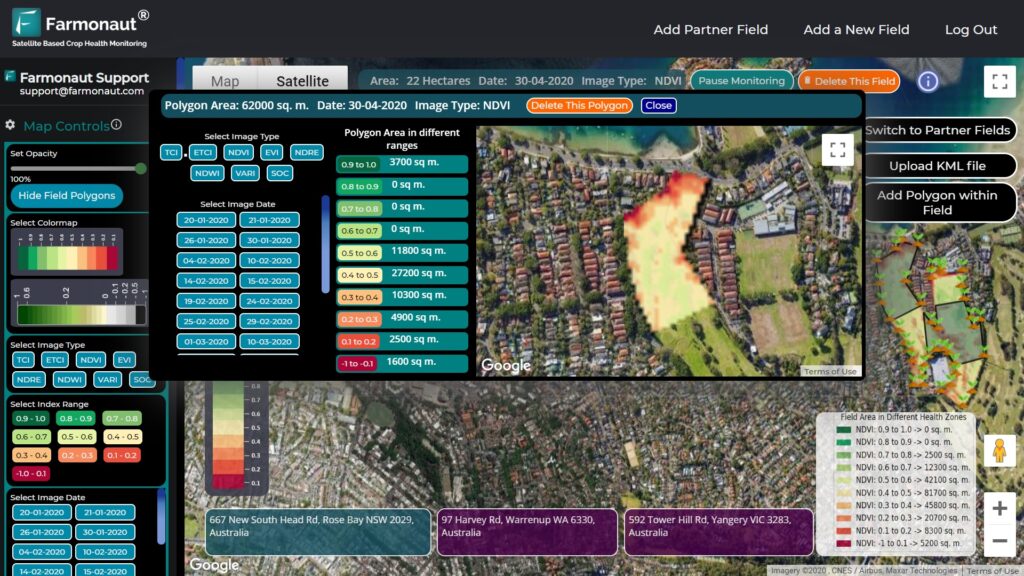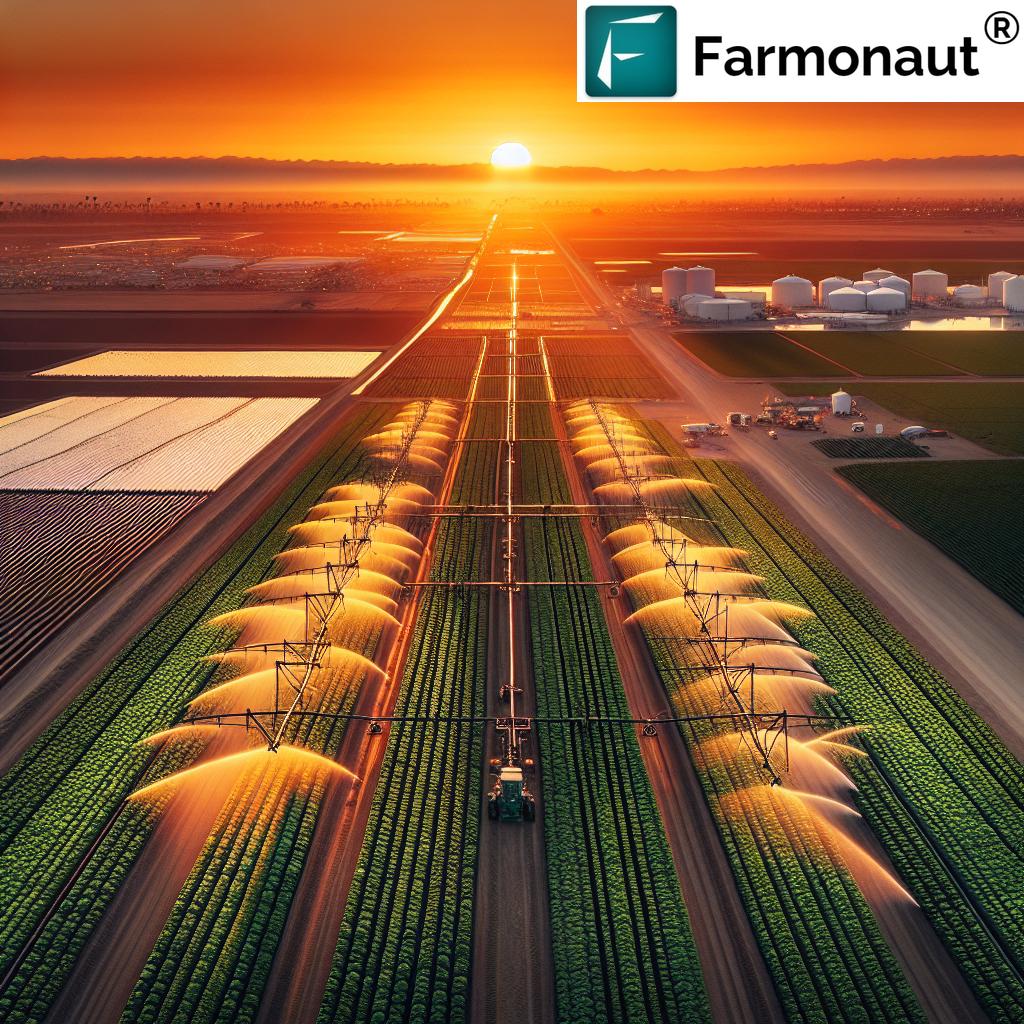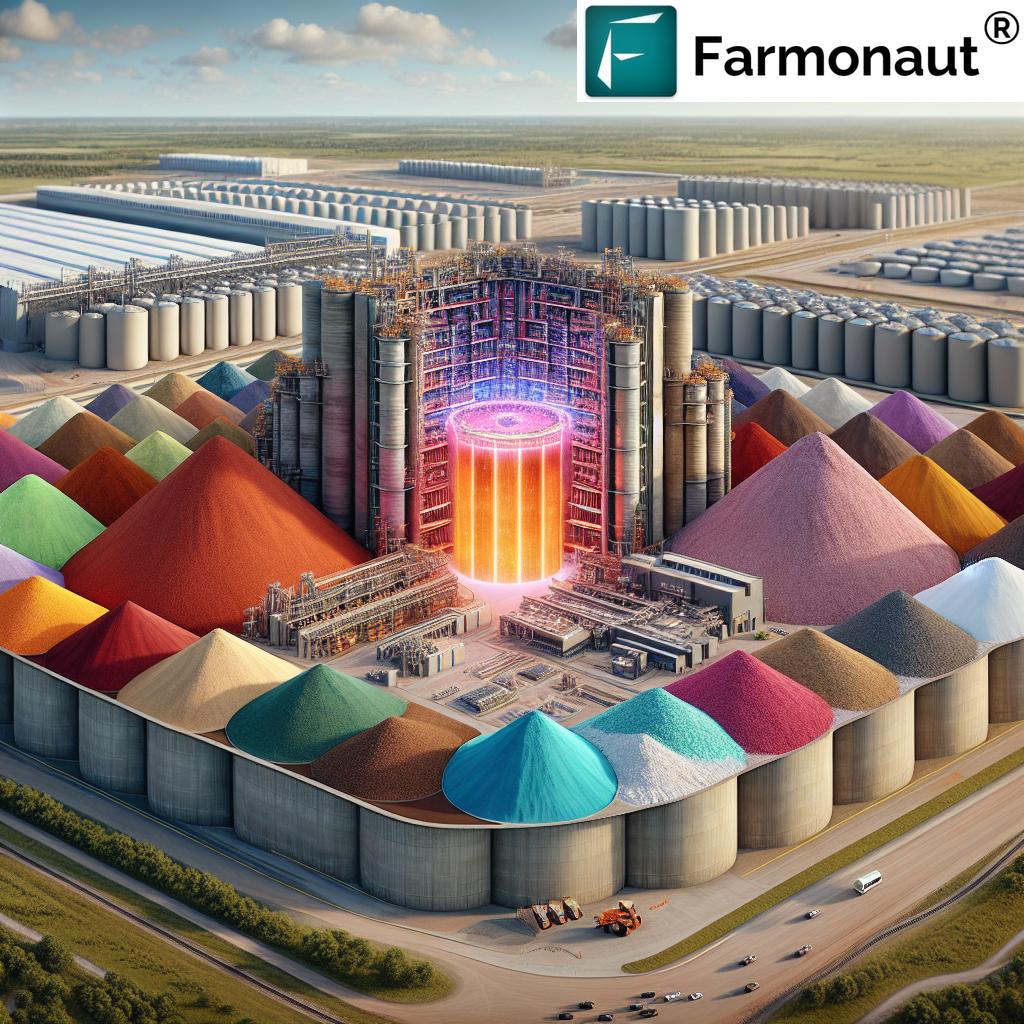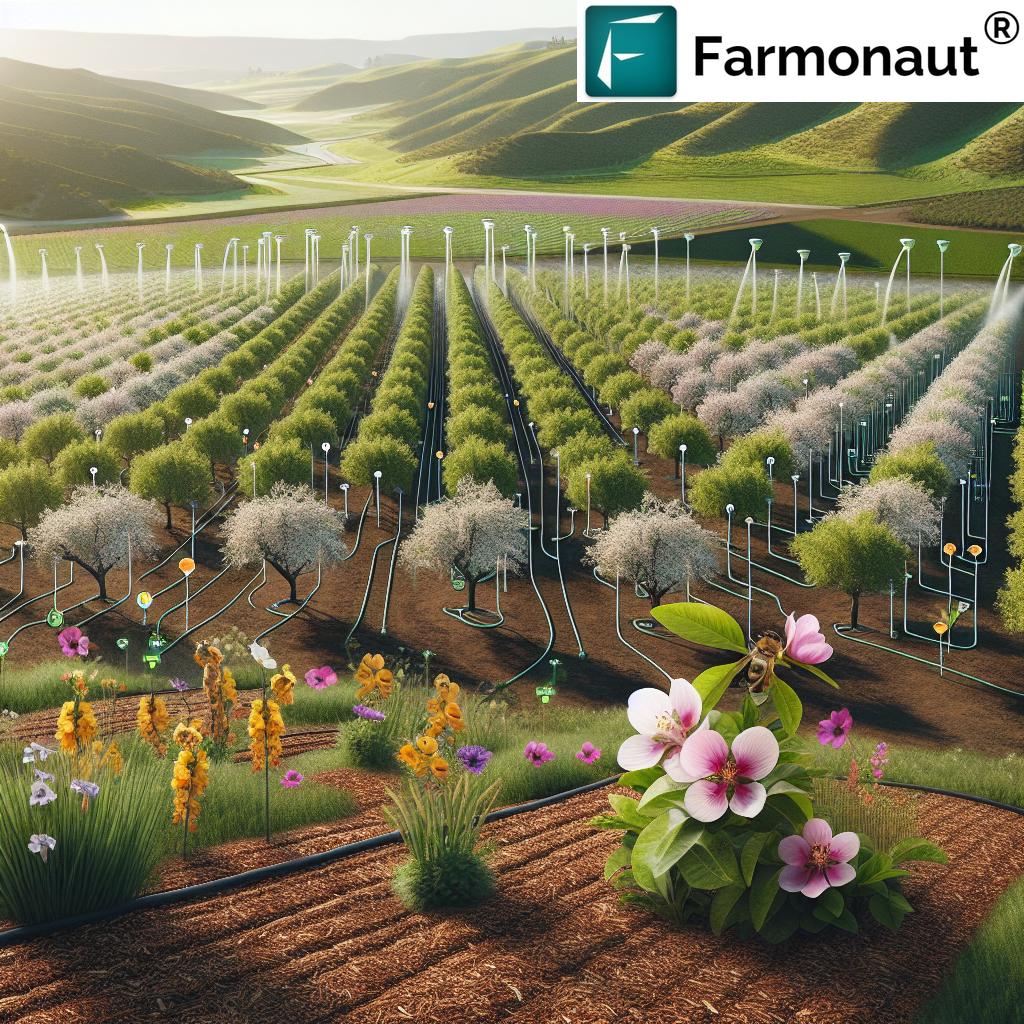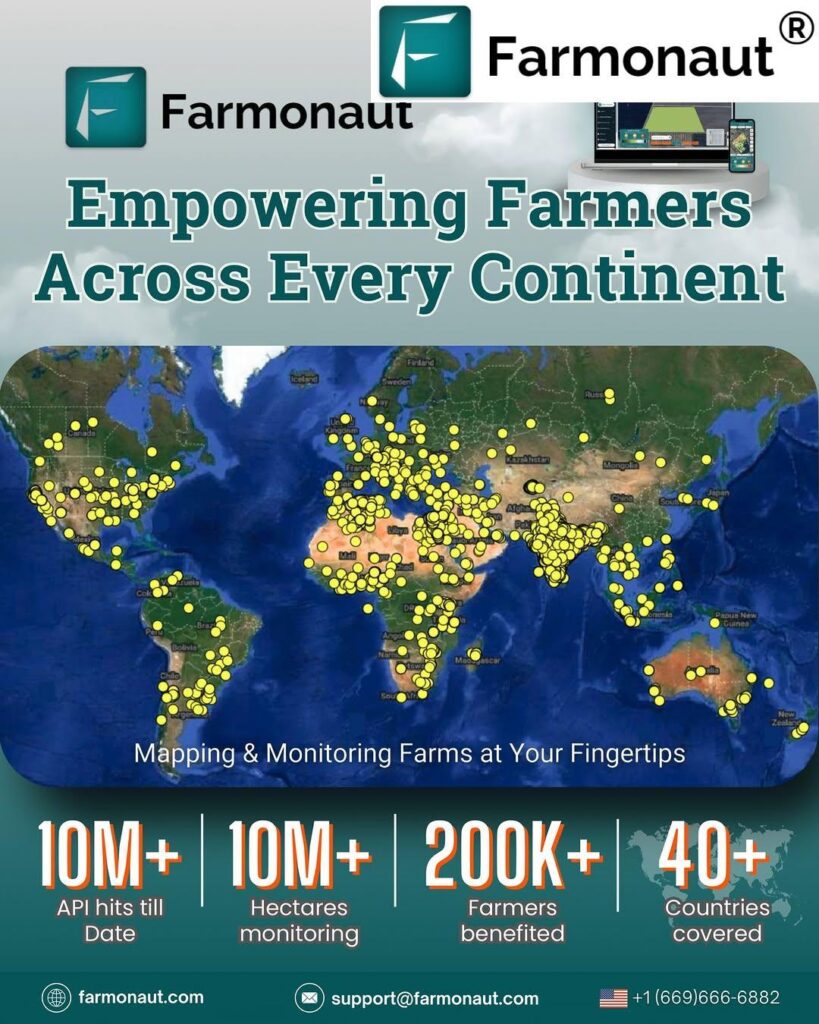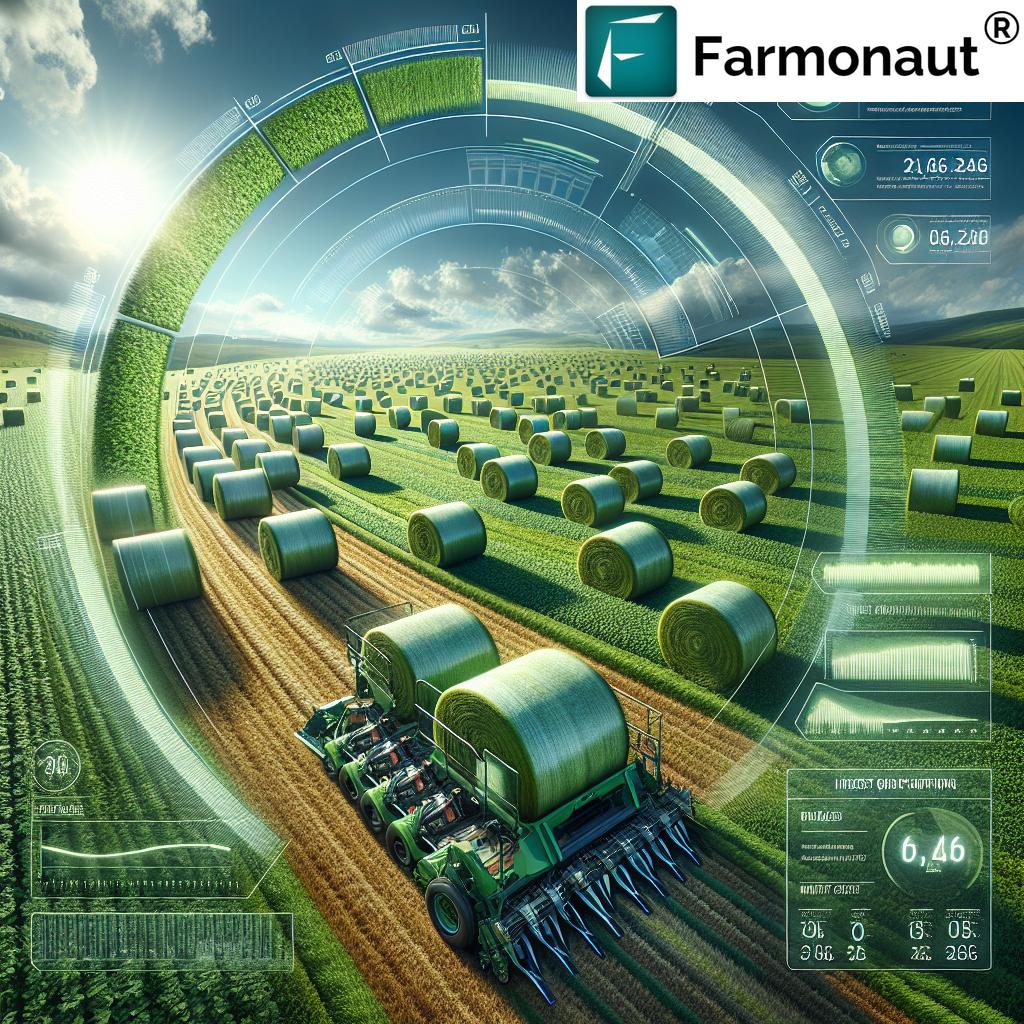Navigating Uncertainty: US Agriculture Industry Challenges and Outlook for 2025
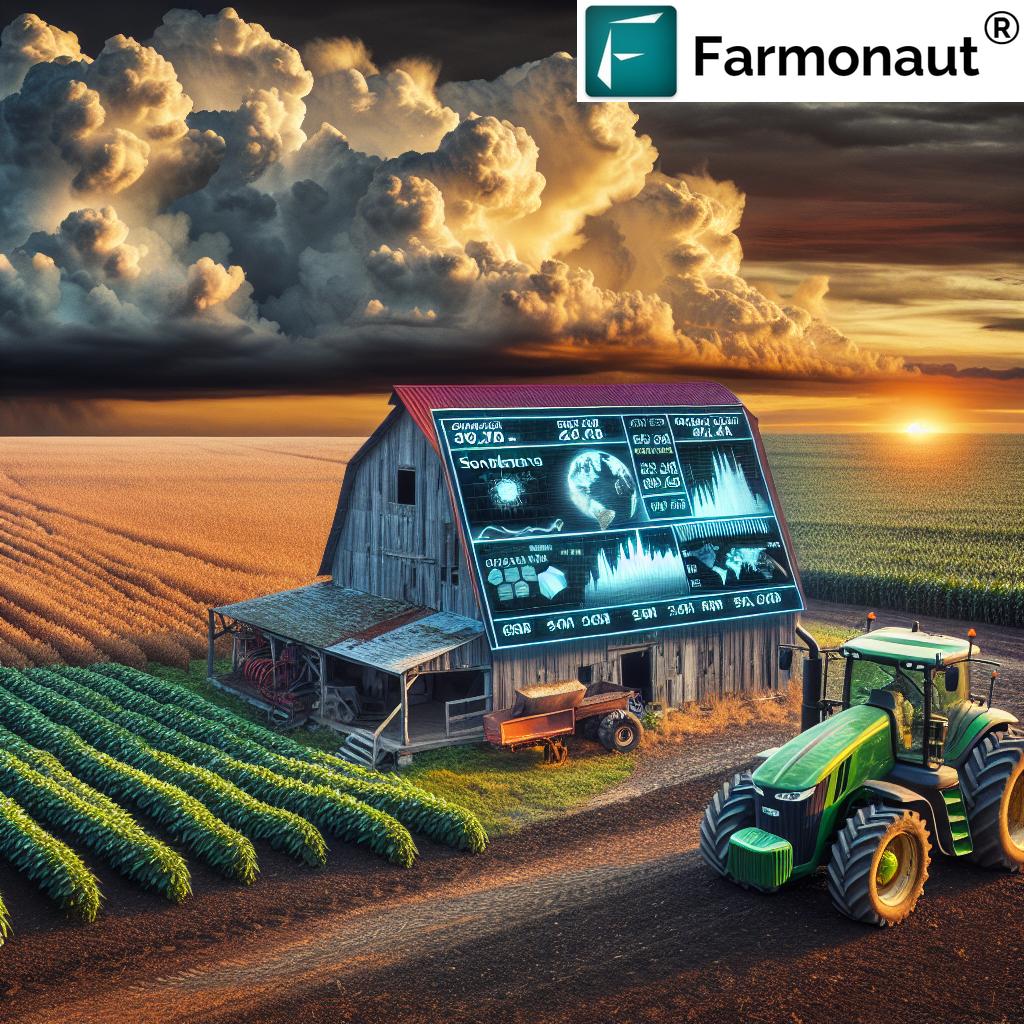
“US agriculture faces a complex landscape with over 50% of farmers reporting financial stress due to rising input costs.”
As we approach 2025, the US agriculture industry finds itself at a critical juncture, facing a multitude of challenges that are reshaping the landscape of farming and agricultural production. In this comprehensive analysis, we’ll delve into the intricate web of economic uncertainty, evolving trade policies, and environmental concerns that are influencing the future of American agriculture. Our goal is to provide a clear understanding of the current situation and offer insights into potential strategies for navigating these turbulent times.
The Current State of US Agriculture
The US agriculture industry, valued at approximately $1.5 trillion, is a cornerstone of the American economy. However, it’s currently grappling with a perfect storm of challenges that threaten its stability and growth prospects. Let’s break down the key factors contributing to this uncertainty:
- Economic Uncertainty: Farmers and agricultural companies are facing financial strains due to fluctuating crop prices and rising input costs.
- Trade Policy Impacts: Ongoing trade disputes, particularly with China, have disrupted established export markets and created uncertainty in global demand patterns.
- Biofuel Policy Ambiguity: Unclear regulations surrounding renewable fuels are complicating decision-making processes for farmers and producers.
- Environmental Concerns: Increasing pressure to adopt sustainable practices while maintaining productivity is challenging traditional farming methods.
Economic Uncertainty in Farming
The economic landscape for US farmers has become increasingly precarious. Crop price fluctuations, coupled with rising costs for essential inputs like fertilizers, seeds, and equipment, are squeezing profit margins. Many farmers find themselves caught in a difficult position, forced to make critical decisions about investments in their operations with limited financial flexibility.
Key Challenges:
- Volatile commodity prices affecting revenue stability
- Increasing production costs outpacing income growth
- Limited access to credit and financial services
- Pressure to adopt new technologies with uncertain returns on investment
To address these challenges, many farmers are turning to precision agriculture technologies to optimize resource use and improve efficiency. Companies like Farmonaut are at the forefront of this revolution, offering satellite-based farm management solutions that provide valuable insights for decision-making.
Trade Policy Impact on Agriculture
The impact of trade policies on US agriculture cannot be overstated. Recent years have seen significant disruptions in international trade relationships, with tariffs and retaliatory measures affecting agricultural exports. The ongoing trade disputes, particularly with China, have led to shifts in global demand patterns and created uncertainty for US farmers and agribusinesses.
“Trade tariffs have impacted over $20 billion worth of US agricultural exports, reshaping global demand patterns.”
The effects of these trade policies are far-reaching:
- Reduced export opportunities for key commodities like soybeans and corn
- Increased price volatility in domestic and international markets
- Shifts in planting decisions as farmers respond to changing market signals
- Long-term concerns about losing market share to international competitors
As we look towards 2025, the resolution of these trade disputes and the establishment of stable, fair trade agreements will be crucial for the recovery and growth of the US agriculture sector.
Biofuel Policy Effects on Farmers
The uncertainty surrounding biofuel policies, particularly those related to ethanol and biodiesel production, is creating additional challenges for farmers. The renewable fuel industry has become a significant market for agricultural products, especially corn and soybeans. However, unclear regulations and shifting policy priorities have left many farmers and biofuel producers in a state of limbo.
Key issues include:
- Uncertainty regarding ethanol blending requirements
- Debates over the future of the Renewable Fuel Standard (RFS)
- Concerns about the impact of electric vehicles on long-term biofuel demand
- Balancing food production with energy crop cultivation
The resolution of these policy uncertainties will play a crucial role in shaping planting decisions and investments in the agricultural sector as we approach 2025.
Agricultural Market Trends
Understanding current and emerging market trends is essential for navigating the challenges facing US agriculture. Several key trends are shaping the industry’s outlook for 2025:
- Shift towards sustainable and organic farming: Consumer demand for environmentally friendly and health-conscious products is driving changes in production methods.
- Increased adoption of precision agriculture: Technologies like satellite imaging, AI, and IoT are revolutionizing farm management practices.
- Diversification of crop portfolios: Farmers are exploring alternative crops to mitigate risks associated with market volatility.
- Growth in direct-to-consumer sales: Digital platforms are enabling farmers to bypass traditional supply chains and connect directly with consumers.
These trends present both challenges and opportunities for US farmers. Adapting to changing consumer preferences and leveraging new technologies will be crucial for success in the evolving agricultural landscape.
Explore Farmonaut’s API for advanced agricultural insights
Farm Economy Outlook
The outlook for the US farm economy in 2025 is a mix of cautious optimism and ongoing concerns. While some sectors may see improvements, others continue to face significant challenges. Here’s a breakdown of key factors influencing the farm economy outlook:
- Commodity Prices: Projections for major crops like corn, soybeans, and wheat remain uncertain, with potential for volatility.
- Farm Income: Overall farm income levels are expected to remain under pressure, with many operations struggling to maintain profitability.
- Land Values: Agricultural land prices may stabilize, but regional variations are likely to persist.
- Farm Debt: Concerns about increasing farm debt levels and potential for financial stress in some sectors.
- Government Support: The role of federal support programs in maintaining farm viability remains a critical factor.
To navigate these economic challenges, farmers and agribusinesses are increasingly turning to data-driven solutions. Platforms like Farmonaut provide valuable tools for optimizing resource use and improving decision-making in this uncertain environment.
Renewable Fuel Regulations and Their Impact
The future of renewable fuel regulations will have significant implications for the agricultural sector. As we approach 2025, several key issues are shaping the landscape:
- Ethanol Blending Mandates: Potential changes to the Renewable Fuel Standard could affect demand for corn-based ethanol.
- Biodiesel Production: Uncertainty surrounding biodiesel tax credits and blending requirements impacts soybean demand.
- Advanced Biofuels: Development of next-generation biofuels may create new market opportunities for farmers.
- Electric Vehicle Adoption: The rise of electric vehicles could potentially reduce long-term demand for biofuels.
The resolution of these regulatory uncertainties will play a crucial role in shaping agricultural production decisions and market dynamics in the coming years.
Soybean Trading and Processing: A Case Study in Market Challenges
The soybean industry serves as a prime example of the challenges facing US agriculture. As one of the country’s most important export crops, soybeans have been particularly affected by trade tensions and shifting global demand patterns. Let’s examine the current state of soybean trading and processing:
- Export Market Disruptions: Trade disputes with China have significantly impacted soybean exports, forcing producers to seek alternative markets.
- Processing Capacity: Domestic soybean processing facilities are adapting to changes in global demand and supply chain disruptions.
- Price Volatility: Fluctuations in soybean prices have created challenges for both farmers and processors in managing risk and planning for the future.
- Value-Added Products: There’s an increasing focus on developing new soybean-based products to diversify market opportunities.
Companies like Bunge Global SA and Archer-Daniels-Midland Co (ADM) have reported significant impacts on their soybean trading and processing operations, highlighting the broader industry challenges.
Agricultural Investment Strategies
In the face of ongoing uncertainties, developing robust agricultural investment strategies is crucial for farmers and agribusinesses. Here are some key approaches being considered:
- Diversification: Spreading investments across different crops, livestock, and value-added products to mitigate risk.
- Technology Adoption: Investing in precision agriculture tools and data analytics to improve efficiency and decision-making.
- Sustainable Practices: Implementing conservation techniques and exploring carbon credit opportunities.
- Value Chain Integration: Exploring opportunities to capture more value through processing or direct marketing.
- Financial Risk Management: Utilizing hedging strategies and crop insurance to protect against price and yield volatility.
Innovative solutions like those offered by Farmonaut can play a crucial role in supporting these investment strategies by providing data-driven insights for farm management.
Learn more about Farmonaut’s API Developer Docs
The Role of Technology in Addressing Agricultural Challenges
As the US agriculture industry navigates these uncertain times, technology is emerging as a key tool for addressing many of the challenges we’ve discussed. Advanced technologies are helping farmers and agribusinesses improve efficiency, reduce costs, and make more informed decisions. Here’s how technology is shaping the future of agriculture:
- Satellite-Based Monitoring: Companies like Farmonaut are revolutionizing crop health monitoring and resource management through satellite imagery and AI analysis.
- Precision Agriculture: GPS-guided equipment and variable rate technology are optimizing input use and improving yields.
- Data Analytics: Big data and AI are providing valuable insights for crop planning, risk management, and market forecasting.
- Blockchain: Improving supply chain transparency and traceability, addressing concerns about food safety and origin.
- Automation: Robotics and autonomous systems are helping address labor shortages and improve operational efficiency.
These technological advancements are not only helping farmers navigate current challenges but are also paving the way for a more resilient and sustainable agricultural sector in the future.
Environmental Concerns and Sustainable Agriculture
As we look towards 2025, environmental concerns are playing an increasingly significant role in shaping the future of US agriculture. Climate change, water scarcity, and soil degradation are just a few of the environmental challenges that farmers and agribusinesses must address. Here’s how the industry is responding:
- Conservation Agriculture: Implementing practices like no-till farming and cover cropping to improve soil health and reduce erosion.
- Water Management: Adopting precision irrigation systems and drought-resistant crop varieties to address water scarcity issues.
- Carbon Sequestration: Exploring opportunities in carbon markets by implementing practices that increase soil carbon storage.
- Renewable Energy: Integrating solar and wind energy production into farming operations to reduce reliance on fossil fuels.
- Biodiversity: Promoting practices that support pollinator health and overall ecosystem biodiversity.
These sustainability efforts are not only crucial for environmental protection but also present opportunities for farmers to access new markets and revenue streams.
Global Demand Shifts and Market Adaptation
The US agriculture industry must also contend with shifting patterns of global demand. Changing dietary preferences, population growth in developing countries, and evolving trade relationships are all influencing the market landscape. Key considerations include:
- Emerging Markets: Identifying and accessing new export opportunities in growing economies.
- Plant-Based Proteins: Responding to increased demand for plant-based alternatives to meat and dairy products.
- Value-Added Products: Developing processed and specialty products to capture more value from agricultural commodities.
- Local Food Systems: Adapting to growing consumer interest in locally sourced and traceable food products.
Successfully navigating these market shifts will require flexibility, innovation, and a deep understanding of global agricultural trends.
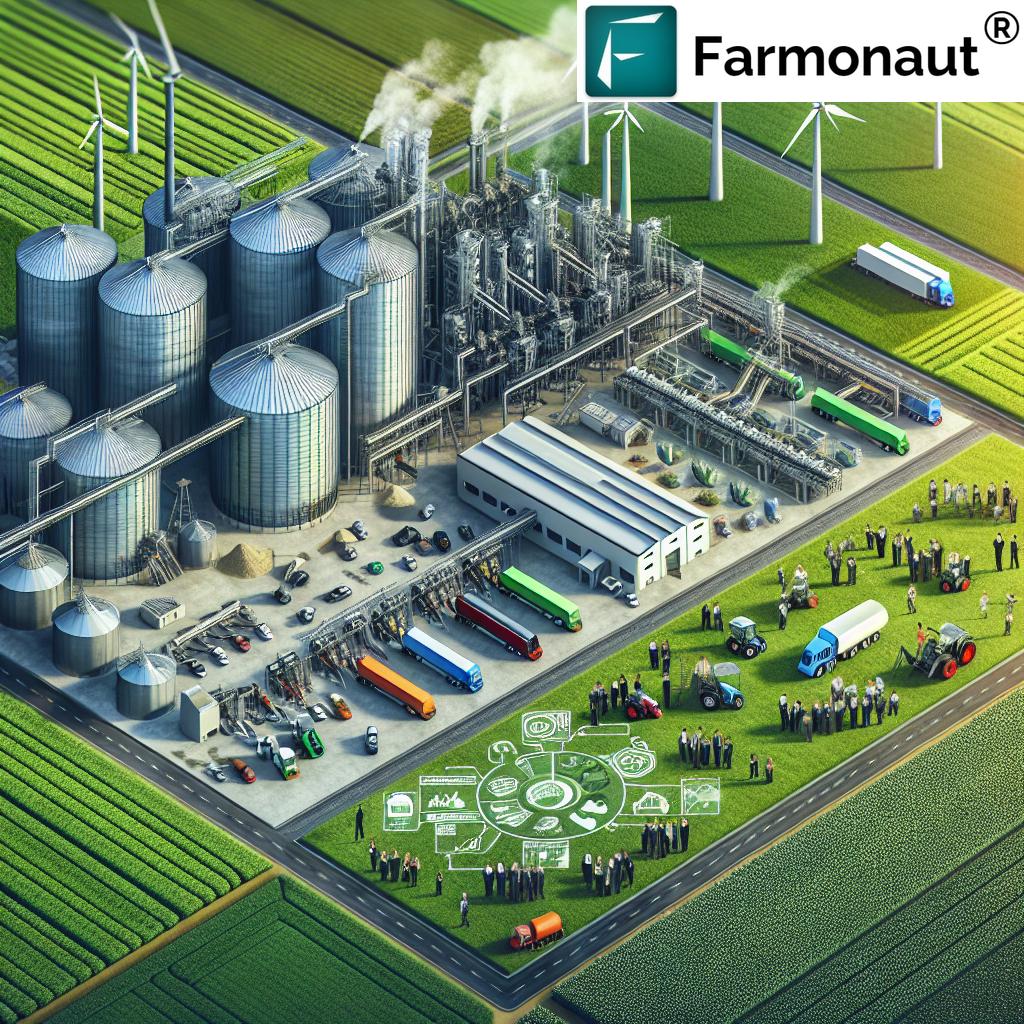
Policy Recommendations and Industry Outlook
As we conclude our analysis of the challenges facing US agriculture in 2025, it’s clear that a coordinated approach involving policymakers, industry leaders, and farmers will be crucial for navigating the uncertain landscape ahead. Here are some key policy recommendations and industry outlook considerations:
- Trade Policy Stability: Establishing clear, long-term trade agreements to provide certainty for agricultural exports.
- Renewable Fuel Policy Clarity: Developing consistent, forward-looking policies for biofuels to support agricultural markets and environmental goals.
- Investment in Rural Infrastructure: Improving broadband access and transportation networks to support agricultural communities and enhance market access.
- Research and Development Support: Increasing funding for agricultural research to drive innovation in sustainable farming practices and crop varieties.
- Risk Management Tools: Enhancing crop insurance and other financial risk management programs to help farmers navigate market volatility.
While challenges remain, the US agriculture industry has consistently demonstrated resilience and adaptability. By embracing innovation, sustainability, and data-driven decision-making, the sector is well-positioned to overcome current obstacles and emerge stronger in the years to come.
US Agriculture Industry Outlook 2025 – Key Factors and Impacts
| Factor | Current Status | Projected Impact by 2025 | Adaptation Strategies |
|---|---|---|---|
| Trade Tariffs | Ongoing disputes, particularly with China | Potential 15-20% reduction in agricultural exports | Market diversification, value-added product development |
| Renewable Fuel Policies | Unclear regulations, shifting priorities | 5-10% fluctuation in corn and soybean demand | Crop diversification, exploring alternative biofuel feedstocks |
| Input Costs | Rising prices for fertilizers, seeds, equipment | Potential 10-15% increase in production costs | Precision agriculture adoption, efficiency improvements |
| Environmental Concerns | Increasing pressure for sustainable practices | Mandatory sustainability measures likely | Implementation of conservation agriculture, carbon sequestration |
| Global Demand Shifts | Changing dietary preferences, emerging markets | Up to 25% shift in crop production patterns | Market research, crop selection based on global trends |
Conclusion
As we navigate the complex challenges facing the US agriculture industry approaching 2025, it’s clear that adaptability, innovation, and resilience will be key to success. The interplay of economic uncertainties, policy shifts, environmental concerns, and technological advancements is reshaping the agricultural landscape in profound ways.
Farmers and agribusinesses that embrace data-driven decision-making, sustainable practices, and innovative technologies will be best positioned to thrive in this evolving environment. Solutions like those offered by Farmonaut, which provide advanced satellite-based farm management tools, will play a crucial role in helping the industry optimize resource use, improve productivity, and navigate market uncertainties.
While challenges remain, the US agriculture sector has consistently demonstrated its ability to adapt and innovate. By leveraging cutting-edge technologies, fostering sustainability, and responding proactively to market shifts, the industry can overcome current obstacles and emerge stronger, more efficient, and more resilient in the years to come.
As we look to the future, collaboration between policymakers, industry leaders, researchers, and farmers will be essential in creating a supportive environment for agricultural growth and innovation. By working together to address these challenges, we can ensure that US agriculture remains a cornerstone of the national economy and continues to play a vital role in feeding the world.
FAQ Section
Q1: What are the main challenges facing the US agriculture industry in 2025?
A1: The main challenges include economic uncertainty, trade policy impacts, unclear biofuel regulations, environmental concerns, and shifting global demand patterns.
Q2: How are trade policies affecting US farmers?
A2: Trade policies, particularly tariffs and disputes with major partners like China, have disrupted export markets and created uncertainty in global demand for US agricultural products.
Q3: What role does technology play in addressing agricultural challenges?
A3: Technology, including satellite-based monitoring, precision agriculture, and data analytics, is helping farmers improve efficiency, reduce costs, and make more informed decisions.
Q4: How is the agriculture industry addressing environmental concerns?
A4: The industry is adopting sustainable practices such as conservation agriculture, precision irrigation, and exploring carbon sequestration opportunities to address environmental challenges.
Q5: What strategies can farmers use to navigate market uncertainties?
A5: Farmers can diversify their crops, adopt new technologies, implement sustainable practices, explore value-added products, and utilize financial risk management tools to navigate uncertainties.




